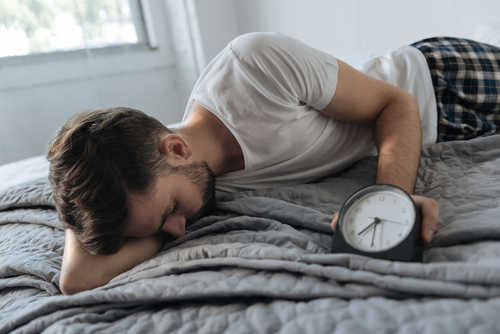Difficulties with Nighttime Sleep and Daytime Sleepiness Seem More Pronounced in Dravet Children, Study Says
Written by |

Nighttime sleep quality is poorer in Dravet syndrome patients and daytime sleepiness more pressing than patients with other types of epilepsy, an exploratory study reports. The problems are shared between both these patient groups, however.
The study, “More daytime sleepiness and worse quality of sleep in patients with Dravet Syndrome compared to other epilepsy patients,” was published in the European Journal of Paediatric Neurology.
People with epilepsy are susceptible to sleeping problems. In the particular case of Dravet syndrome, sleeping disorders affect between 75% and 95% of patients. These sleep disturbances have also been reported in animal models of the disease.
Sleep deprivation can have a major impact on patients and caregivers’ quality of life, and it can also exacerbate patients’ behaviorial problems, disturb cognitive functioning, and provoke seizures.
A team led by researchers at University of Antwerp, Belgium, evaluated the prevalence of sleeping disorders in a large group of patients with Dravet syndrome, and those with other forms of epilepsy who served as controls.
The study enrolled 56 patients age 1 to 48 who had mutations on SCN1A or HCN1 genes, both known to be associated with Dravet syndrome. About 53.6% of these patients had frequent seizures, while 14.3% reported to be seizure free.
It also included 66 patients, aged 6 months to 20 years, with other types of epilepsy, including Lennox-Gastaut syndrome.
Patients’ parents or caregivers responded to an online survey designed to evaluate sleeping disturbances and their severity in people with intellectual disability or genetic syndromes.
Evaluation of the sleeping patterns revealed that all parents have a ritual for putting their children to bed, with 18.5% of caregivers reporting to regularly have difficulties getting their children to sleep. About 75.9% of Dravet children fall asleep within 30 minutes of being in bed, and only 4 patients fulfilled the criteria for a severe or mild sleep problem.
But, according to parents’ reports, 60.4% of children would wake up in the middle of the night more than once per week, with a mean frequency of two times per night. After waking, 74% could fall asleep relatively easily.
Overall, 42.9% of Dravet patients were found have a mild night waking problem, and 22.4% a severe night waking problem.
Analysis of the survey responses according to the Composite Sleep Index (CSI) score system revealed that 28.3% of children had a severe sleep disorder (CSI score of 4 or higher). A CSI is calculated based on the frequency of problems with settling at bedtime, nighttime waking, early morning waking, co-sleeping (sleeping with others), and the duration of settling and night waking. The resulting CSI score ranges from 0 to 12, and a score of 4 or greater indicates a severe sleep problem.
Severity was not found to be associated with patient gender or age, nor with coexistence of respiratory problems, motor impairment, or gastro-intestinal problems.
The CSI score was found to be significantly higher in patients who co-sleep with parents or siblings compared to those who sleep alone. Patients using Diacomit (stiripentol) and melatonin were also more prone to have higher CSI scores.
Comparison of the sleeping patterns among Dravet patients with those with other epilepsies revealed that Dravet children had more sleeping problems and poorer quality of sleep.
Parents of Dravet patients reported more night waking problems, while parents from the control group reported more settling problems. However, based on the survey’s predefined analysis criteria, both settling problems and night waking problems were similar between the two groups.
Still, the prevalence of mild to severe sleep problems, either settling or night waking, was higher in Dravet patients at 74.4%, compared to 53.3% in the control group. This difference may in part be explained by the tendency of more mild sleep problems in the control group, the researchers said.
Analysis of sleep parameters like snoring, sleep apnea, and anxiety related to sleep revealed one significant difference between the two groups — daytime sleepiness scores were higher in the Dravet population.
“Severe sleep problems occur as often in children with epilepsy as [in] patients with Dravet syndrome. However daytime sleepiness and parental-reported sleep quality are worse in Dravet patients,” the researchers wrote.
“This study provides important results and may guide further research,” they added. “It will be important to expand the study population and gain more insight in the role of nocturnal seizures, the effect of the different antiepileptic drugs (like stiripentol) and the effect of treatment of sleep disturbances.”





